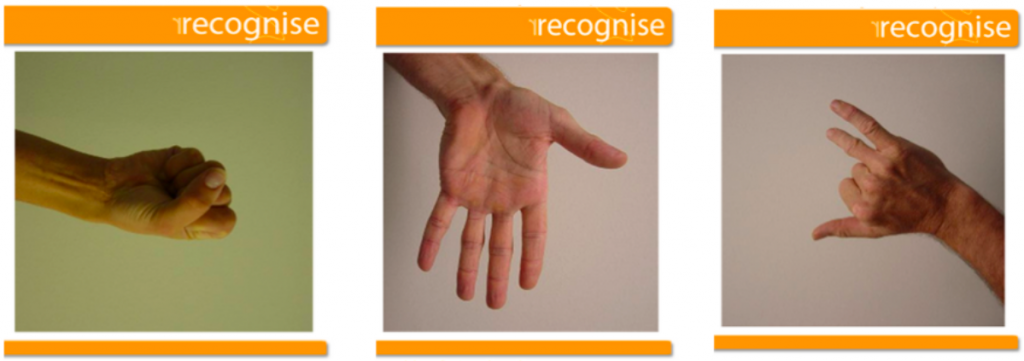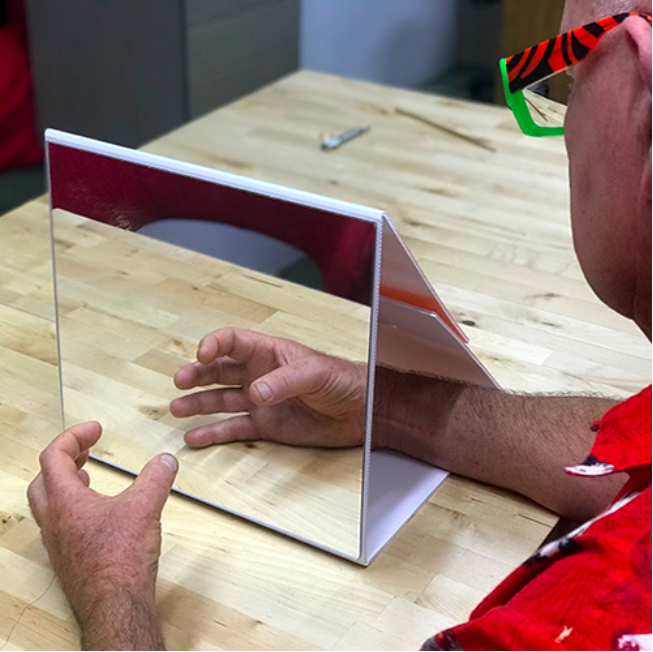Graded Motor Imagery (GMI) is a ‘Hands Off’ model of treatment used in those who are suffering from various types of chronic neuropathic (nerve) pain.
Chronic pain is different from other types of pain (like a muscle tear or ligament injury) in that the nervous system itself is the source of pain. Often, the nerve injury is related to the original injury but is also a separate injury in itself. This manifests itself in conditions such as Complex Regional Pain Syndrome (CRPS) which we commonly see in hand and upper limb injuries here at Peninsula Hand Therapy.
Treating chronic pain requires a different approach than the normal rehabilitation for soft tissue or bony injuries. This is where GMI comes in. There is an evolving body of evidence showing that GMI is the most effective approach for the treatment of chronic pain. Much of this research has been carried out here in Adelaide, Australia by the Neuro Orthopaedic Institute (NOI) group.
GMI is broken down into 3 stages that are typically completed sequentially.
- Left/Right discrimination
- Explicit motor imagery
- Mirror box therapy
Left/Right discrimination
This first stage involves looking at pictures of the hand in various positions and determining if it is a left or right hand. The ability to accurately discriminate left vs right appears to be critical for recovering from chronic pain. We are not exactly sure on the science yet (watch this space!) but we know that people with chronic pain consistently have a reduced capacity to discriminate left vs right.
Here are some of the pictures from left/right training below. Give it a go! (Thanks to NOI group for the pictures).

Explicit motor imagery
Here’s a fun fact. Did you know that approximately 25% of the neurons in our brains are ‘mirror’ neurons? These neurons are special in that they activate when we either think of moving or observe someone doing something. Think of sports people who talk about visualizing a movement before doing it, or you thinking of the route you will take while driving somewhere or learning a new dance move. The visualization helps get the correct neurons working in order to more accurately complete a task.
For those suffering with chronic pain, even thinking of the affected area can cause a painful response. Explicit motor imagery is a very powerful but subtle tool that you can use throughout the day when doing routine tasks to think of your affected limb without provoking a painful response.
Explicit motor imagery can be done in a variety of different ways to challenge yourself; you could start by practicing in a comfortable, relaxed space (like the bath!) and progress from there to more challenging environments.
Mirror box therapy
The final stage of GMI involves a very unusual piece of equipment, a mirror and a box!
A mirror box is used to help create an illusion that the affected limb is moving, by placing the affected hand behind the mirror and the other hand in front of the mirror. You then move the unaffected hand that is reflected in the mirror which creates the illusion that the other hand is moving. This movement can be made without associated pain.
This very interesting technique is able to re-wire the way the sensory part of our brain appreciates pain from our affected limb and can help to improve movement and reduce pain.
Starting mirror box therapy is a big step in progressing the treatment of CRPS and is best done with the guidance of an experienced Hand Therapist. This way you are likely to avoid flare ups of your pain.

Conclusion
GMI in the treatment of chronic pain, is a rapidly evolving area of research. It can be used to help anyone who suffers from CRPS. GMI is used routinely by our Occupational Therapists and Physiotherapists here at Peninsula Hand Therapy.
Please get in touch via email or phone if you would like to make an appointment or just to discuss the use of GMI in treatment of your CRPS or chronic pain condition.
This has been written by Ross Bruce one of our senior Physiotherapist / Hand Therapists who has expertise and a personnel interest in treating chronic pain.